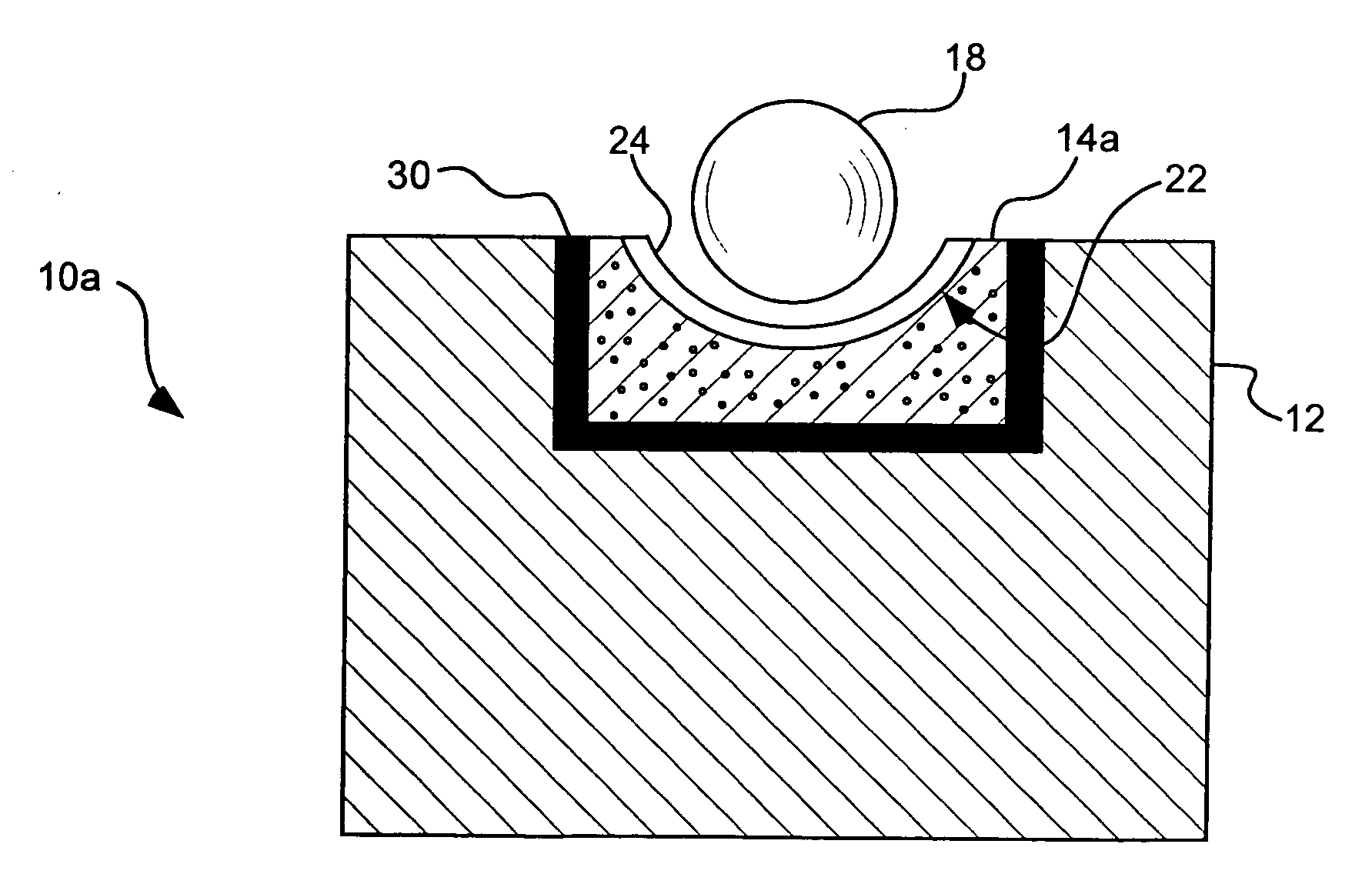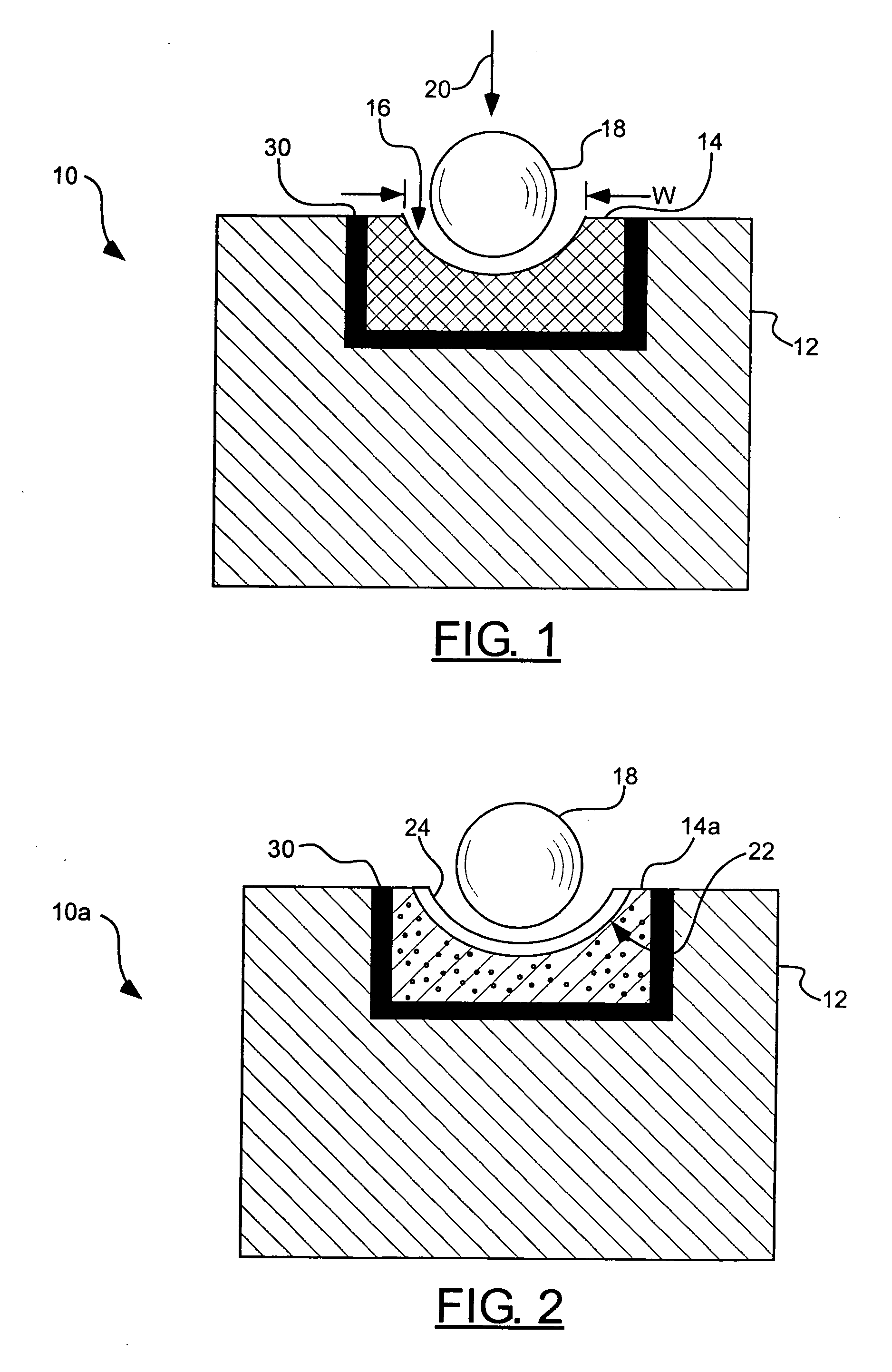Superhard mold face for forming ele
a mold face and superhard technology, applied in glass tempering apparatus, manufacturing tools, food shaping, etc., can solve the problems of affecting the surface quality of the lens, reducing throughput times, and small aberrations or surface defects (e.g. unremovable parting agents) that can be very problematic, and achieve the effect of smoothing the optical elemen
- Summary
- Abstract
- Description
- Claims
- Application Information
AI Technical Summary
Benefits of technology
Problems solved by technology
Method used
Image
Examples
example 1
[0083] Micron (about 2-6 micron) diamonds are mixed with tungsten powder and subject to about 6 GPa pressure and about 1500° C. temperature for about 20 minutes. The PCD produced has a cylindrical form with a diameter of about 30 mm and a height of about 20 mm. Due to the presence of W, the PCD is electro-discharge formed to create a depression therein. Subsequently, the depression is ground with diamond tools and lapped / polished with diamond powder of decreasing size to achieve a mirror finish. The mold so formed can be used directly or it can be further coated with diamond film or cermet composite.
example 2
[0084] A sintered cylinder is used as the mold material. It is formed with a cavity and smooth finish. The surface is coated with cermet composite coating that grades the composition from SiC to Tantalum so the surface has little or no grain boundary.
PUM
| Property | Measurement | Unit |
|---|---|---|
| Temperature | aaaaa | aaaaa |
| Pressure | aaaaa | aaaaa |
| Temperature | aaaaa | aaaaa |
Abstract
Description
Claims
Application Information
 Login to View More
Login to View More - R&D
- Intellectual Property
- Life Sciences
- Materials
- Tech Scout
- Unparalleled Data Quality
- Higher Quality Content
- 60% Fewer Hallucinations
Browse by: Latest US Patents, China's latest patents, Technical Efficacy Thesaurus, Application Domain, Technology Topic, Popular Technical Reports.
© 2025 PatSnap. All rights reserved.Legal|Privacy policy|Modern Slavery Act Transparency Statement|Sitemap|About US| Contact US: help@patsnap.com


